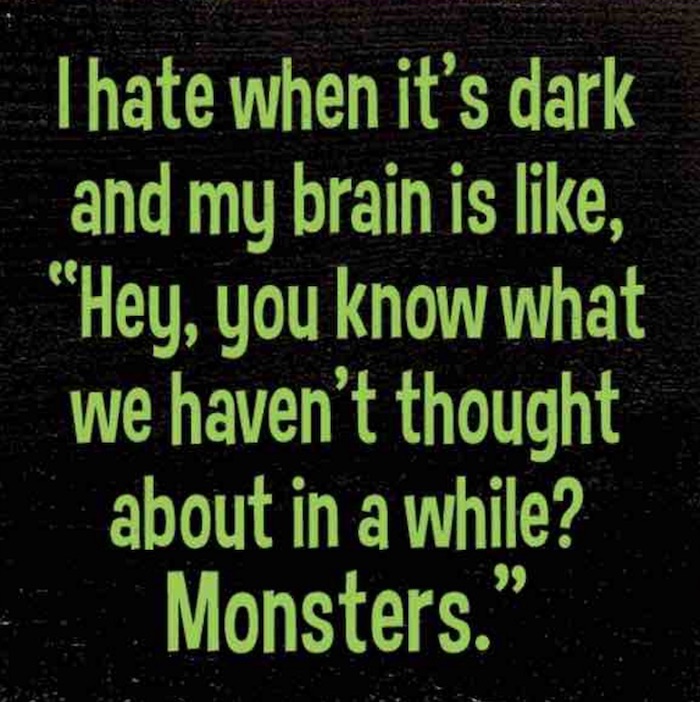The Problem: Everyone has an opinion about how to become more happy.
The Science: Scientists who study the brain have something to say you haven’t heard before!
The Solution: Here’s a snip-it of an Eric Barker original post: Read until the end to find out how you can get more!
You get all kinds of happiness advice on the internet from people who don’t know what they’re talking about. Don’t trust them.
Actually, don’t trust me either. Trust neuroscientists. They study that gray blob in your head all day and have learned a lot about what truly will make you happy.
UCLA neuroscience researcher Alex Korb has some insights that can create an upward spiral of happiness in your life. Here’s what you and I can learn from the people who really have answers:
1) The Most Important Question To Ask When You Feel Down
2) Label Negative Feelings
3) Make That Decision
4) Touch People
No, not indiscriminately; that can get you in a lot of trouble.
But we need to feel love and acceptance from others. When we don’t, it’s painful. And I don’t mean “awkward” or “disappointing.” I mean, it’s actually painful.
Neuroscientists did a study where people played a ball-tossing video game. The other players tossed the ball to you, and you tossed it back to them. Actually, there were no other players; that was all done by the computer program.
But the subjects were told the characters were controlled by real people. So what happened when the “other players” stopped playing nice and didn’t share the ball?
Subjects’ brains responded the same way as if they experienced physical pain. Rejection doesn’t just hurt like a broken heart; your brain feels it like a broken leg.
Via The Upward Spiral:
“In fact, as demonstrated in an fMRI experiment, social exclusion activates the same circuitry as physical pain… at one point they stopped sharing, only throwing back and forth to each other, ignoring the participant. This small change was enough to elicit feelings of social exclusion, and it activated the anterior cingulate and insula, just like physical pain would.“
Relationships are very important to your brain’s feeling of happiness. Want to take that to the next level? Touch people.
Via The Upward Spiral:
“One of the primary ways to release oxytocin is through touching. Obviously, it’s not always appropriate to touch most people, but small touches like handshakes and pats on the back are usually okay. For people you’re close with, make more of an effort to touch more often.“
Touching is incredibly powerful. We just don’t give it enough credit. It makes you more persuasive, increases team performance, and improves your flirting… heck, it even boosts math skills.
Touching someone you love actually reduces pain. In fact, when studies were done on married couples, the stronger the marriage, the more powerful the effect.
Via The Upward Spiral:
“In addition, holding hands with someone can help comfort you and your brain through painful situations. One fMRI study scanned married women as they were warned that they were about to get a small electric shock. While anticipating the painful shocks, the brain showed a predictable pattern of response in pain and worrying circuits, with activation in the insula, anterior cingulate, and dorsolateral prefrontal cortex. During a separate scan, the women either held their husbands’ hands or the hand of the experimenter. When a subject held her husband’s hand, the threat of shock had a smaller effect. The brain showed reduced activation in both the anterior cingulate cortex and dorsolateral prefrontal cortex— that is, less activity in the pain and worrying circuits. In addition, the stronger the marriage, the lower the discomfort-related insula activity.“
So, hug someone today. And do not accept little, quick hugs. No, no, no. Tell them your neuroscientist recommended long hugs.
Via The Upward Spiral:
“A hug, especially a long one, releases a neurotransmitter and hormone oxytocin, which reduces the reactivity of the amygdala.“
Research shows getting five hugs a day for four weeks increases happiness big time.
Don’t have anyone to hug right now? No? (I’m sorry to hear that. I would give you a hug right now if I could.) But there’s an answer: neuroscience says you should go get a massage.
Via The Upward Spiral:
“The results are fairly clear that massage boosts your serotonin by as much as 30 percent. Massage also decreases stress hormones and raises dopamine levels, which helps you create new good habits… Massage reduces pain because the oxytocin system activates painkilling endorphins. Massage also improves sleep and reduces fatigue by increasing serotonin and dopamine and decreasing the stress hormone cortisol.“
So spend time with other people and give some hugs. Sorry, texting is not enough.
When you put people in a stressful situation and then let them visit loved ones or talk to them on the phone, they feel better. What about when they just texted? Their bodies responded the same as if they had no support at all.
Via The Upward Spiral:
“…the text-message group had cortisol and oxytocin levels similar to the no-contact group.“
Author’s note: I totally approve of texting if you make a huge appointment.
(To learn what neuroscience says is the best way to get smarter and happier, click here.)
Okay, I don’t want to strain your brain with too much info. Let’s round it up and learn the quickest and easiest way to start that upward spiral of neuroscience-inspired happiness…
Sum Up
Here’s what brain research says will make you happy:
- Ask, “What am I grateful for?” No answers? Doesn’t matter. Just searching helps.
- Label those negative emotions. Give it a name, and your brain isn’t so bothered by it.
- Decide. Go for “good enough” instead of “best decision ever made on Earth.”
- Hugs, hugs, hugs. Don’t text — touch.
So what’s the dead simple way to start that upward spiral of happiness?
Just send someone a thank you email. If you feel awkward about it, you can send them this post to tell them why.
This really can start an upward spiral of happiness in your life. UCLA neuroscience researcher Alex Korb explains:
“Everything is interconnected. Gratitude improves sleep. Sleep reduces pain. Reduced pain improves your mood. Improved mood reduces anxiety, which improves focus and planning. Focus and planning help with decision making. Decision making further reduces anxiety and improves enjoyment. Enjoyment gives you more to be grateful for, which keeps that loop of the upward spiral going. Enjoyment also makes it more likely you’ll exercise and be social, which, in turn, will make you happier.“
So, thank you for reading this.
And send that thank you email now to make you and someone you care about very happy.
Want more?! Read the whole post.
Can’t Get Enough?!! Preorder his new book, Barking Up The Wrong Tree, today at http://geni.us/butwt.



